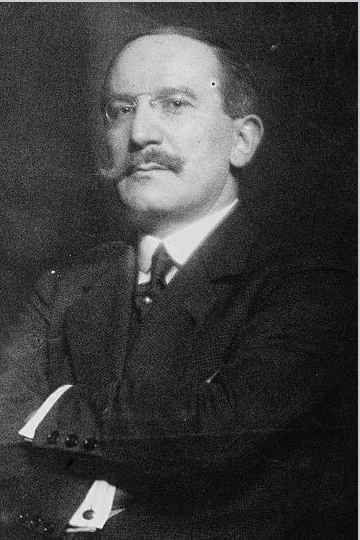 LEON BAKST
LEON BAKST
(08.02.1866-28.12.1924)
Original name Lev Samoylovich Rosenberg, (born April 27 [May 10, New Style], 1866, Grodno, Russia [now Hrodna, Belarus]—died December 27, 1924, Paris, France), Jewish Russian artist who revolutionized theatrical design both in scenery and in costume.
His designs for the Ballets Russes, especially during its heyday (1909–14), were opulent, innovative, and extraordinary, and his influence on fashion and interior design was widespread.
A much underestimated figure in Russian art, Leon Bakst is best known for the decorative art which he created for Sergei Diaghilev and the Ballets Russes. Fired by his love of colour, his brightly painted sets and richly coloured costumes combined extravagant designs with refined details to convey a heady atmosphere of Slavonic orientalism. This mixture of modern art with traditional Russian folk art inspired dancers and audiences alike. He became artistic director for Diaghilev in 1909, and his stage designs rapidly brought him international fame. Among his finest creations were the designs for Tchaikovsky's ballet Sleeping Beauty (London, 1921). Bakst also excelled at graphic art, indeed his first real success came in 1898 after he co-founded the influential "World of Art" group, sponsored by Savva Mamontov (1841-1918), and took charge of the illustration of the group's "World of Art" periodical. His exceptional talent at drawing and sketching is exemplified by his pen and ink drawing of Isadora Duncan (1908, Ashmolean Museum, Oxford). Although less well-known than many of his contemporaries, Bakst remains one of the most influential of Russian artists, and was chiefly responsible for the visual impact of the Ballets Russes. He revolutionized the design of theatrical scenery and costumes, and ranks among the most influential modern artists of the early 20th century.
Style of Painting
As an artist, Bakst preferred a realist style as used by Old Masters such as Rembrandt and Velazquez. In his portraits he was also influenced by his close friend Valentin Serov (1865-1911). In his stage sets, due partly to the influence of Benois, he experimented with orientalism, using motifs from Egyptian art and the Middle East. He was also drawn to the Symbolism movement, and to the fashionable Art Nouveau idiom of sinuous lines, which perfectly suited the bright colours, and flowing drapes of his theatrical designwork.